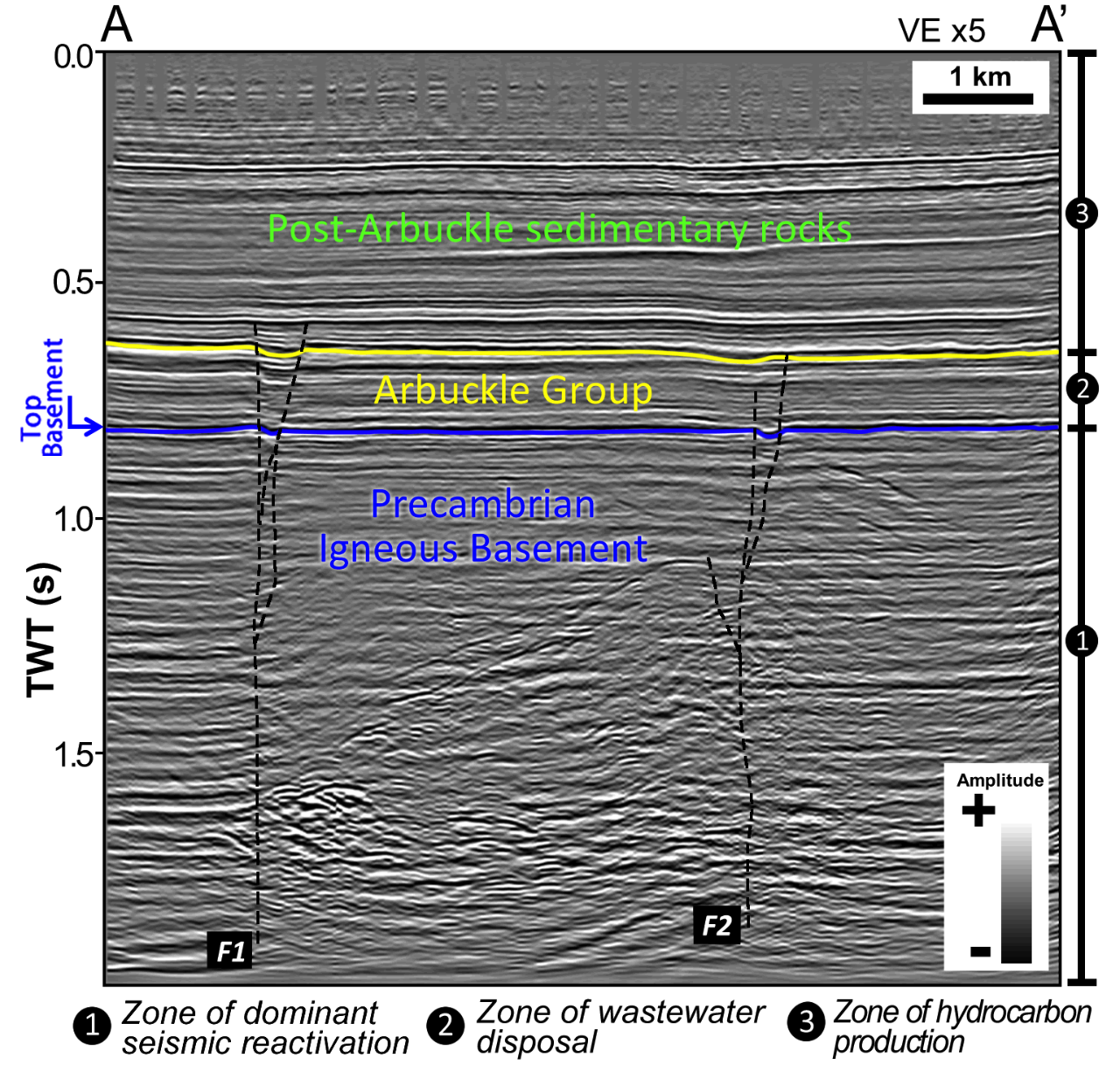OU STUDY REVEALS THE SUSCEPTIBILITY OF OKLAHOMA’S ROCKS TO WASTEWATER INJECTION-RELATED EARTHQUAKES
Sept. 18, 2019
NORMAN, OKLA. – A team of University of Oklahoma researchers recently published their findings on the connections between injection-related earthquake activity, and pre-existing fault systems in the granitic basement rocks that underlie large portions of Oklahoma in the journal Nature-Geoscience.
It has been speculated that wastewater injection is the cause of the recent increase in seismic activity in the central and eastern US, including Oklahoma where the highest concentration of seismicity has occurred. However, the necessary ‘ingredients’ required for the observed earthquakes have yet to be fully identified. The team of researchers in OU’s Mewbourne College of Earth and Energy were able to identify distinctive characteristics of Oklahoma’s basement that makes it susceptible to injection-related earthquakes. Their study highlights in detail, for the first time, the most complete list of ‘ingredients’ necessary to generate widespread induced earthquakes.
The study, concentrating on activity in Oklahoma through a multidisciplinary approach of data collection and analyses, was led by OU doctoral student Folarin Kolawole. Other participants include School of Geosciences faculty Kurt Marfurt, Ze’ev Reches and Brett Carpenter; former students Candace Johnston and Chance Morgan; and U.S. Geological Survey geophysicists Jefferson Chang and David Lockner.
The team’s initial findings show that the Oklahoma granitic basement, located more than a mile underground, is naturally characterized by a dense, systematic network of fracture and fault systems that are susceptible to induced earthquakes. The widespread nature of these fracture and fault systems, aligning with recent earthquake activity, indicates that earthquakes would be expected to continue in currently active areas and could spread into other areas of the state where wastewater injection occurs.
A three-dimensional seismic analysis in Osage County, Okla., showed steeply dipping, deep-reaching faults that also penetrate the layers of sedimentary rocks above it. These faults could serve as a pathways for wastewater into the basement.
Experimental testing of the stability of Oklahoma basement rocks shows that they become frictionally unstable at conditions relevant to depths of two to four miles below the surface, which is where many of the earthquakes in Oklahoma have taken place.
The team’s research can help mitigate induced seismicity in the state and help with decision making when disposing of wastewater. As wastewater disposal is a necessary part of the hydrocarbon production cycle in the state, this research will benefit all involved in the process.
To read the full article, visit https://www.nature.com/articles/s41561-019-0440-5.
#####




